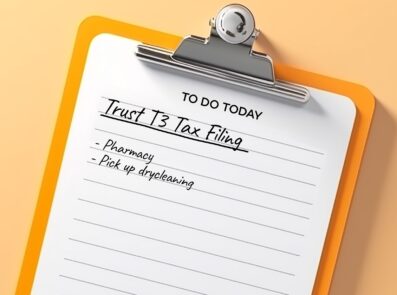By: Chad Saikaley
As we head into week four of our new business reality, there has been a gradual change of mood among many GGFL clients.
It’s fair to say that during week one, business owners were, understandably, somewhere in the range of concerned to panicked.
Today, after a series of tax deferrals and other government measures to help keep businesses afloat, and employees in work, things have calmed and we’re sensing more of a ‘maybe we can do this’ attitude.
Not to overstate it. There is still concern but the calls we have been having with clients during the past few days have been to answer the question: ‘Okay, there are all these different measures out there, tell me what’s relevant to me and how can I take advantage of them?’
Two announcements in particular have had a positive impact: The 75 per cent federal wage subsidy and the $40,000 government-backed, partially forgivable, loan for businesses with less than a $1-million payroll.
The government announced details of its 75 per cent wage subsidy just a couple of days ago, so we’re still analyzing those details, and business owners still have to fund 100 per cent of their own payroll and then claim the subsidy. It can take up to six weeks to get the money back.
The remaining 25 per cent of the payroll cost is deductible, but the 75% subsidy is taxable.
As such, we are cautioning business owners that when all the calculations are done, they will still be directly responsible for approximately 50 per cent of their payroll – so the business needs to be able to sustain that.
One easily-implemented part of the federal aid package is the 10% temporary wage subsidy which provides an immediate reduction in payroll remittances to companies or organizations that qualify.
Following the guidelines of this program a business can reduce its payroll tax remittance to CRA by up to a maximum of $25,000 and put the extra cash towards operating costs. It’s that simple.
No business owner enjoys laying people off, so the government aid has come as a relief for those who can minimize layoffs or bring back employees laid off when the COVID-19 epidemic began to bite.
Many of our business clients are re-assigning employees to duties more suited to get them through this emergency. For instance, one of my clients in the restaurant industry has re-assigned some serving staff to his kitchen and delivery team.
But not all businesses are able to adapt and they remain understandably concerned, not just about the here and now but what the environment will be like when we eventually emerge from this pandemic.
Restaurants, car dealerships, and real estate brokers are all feeling a significant financial pinch.
People aren’t buying new cars now, but how long into the economic hangover will that last?
Will house-buyers be less inclined to buy the $1-million dollar home and either spend less or be happy where they currently live.
The banquet and catering industry is another trouble spot. Will there still be an appetite for big weddings that are an important part of their business?
These are just some of the concerns we’re hearing from our clients and among some, there is a nagging doubt that government doesn’t quite understand what it takes to run a small or medium sized business.
For example, to qualify for the 75% wage subsidy, a business must have experienced a 30 per cent decline in a given month when compared to the same month in 2019. I have a client who has doubled his staff over the past year and now has to lay off employees. Even though he is experiencing a decline of greater than 30% from the beginning of the year, it will not be 30% lower when compared to March 2019. He has invested heavily in his business growth and now falls through the subsidy cracks, and his business is not alone in that regard.
I realize that the government has not had the time it usually has to test drive its COVID-19 related measures but they are missing one major opportunity to help business – helping out landlords and tenants.
Rent or occupancy are a major cost for any business and currently there is a disconnect between tenants, landlords and banks.
Tenants can’t afford to pay rent, landlords need rent to pay mortgages and banks want their mortgage payments.
The government needs to be offering some form of support to banks so they can alleviate this situation. (Obviously a landlord would need to prove that any relief is being passed down to the tenant).
So, that’s how it looks at the end of week three.
It appears as though we’re only in the early stages of this economic upheaval but while we know the challenges still seem insurmountable for many, it’s heartening for all of us at GGFL to hear from clients who are using available resources and finding ways to adapt.
Chad Saikaley is a GGFL Partner and Head of Tax.





